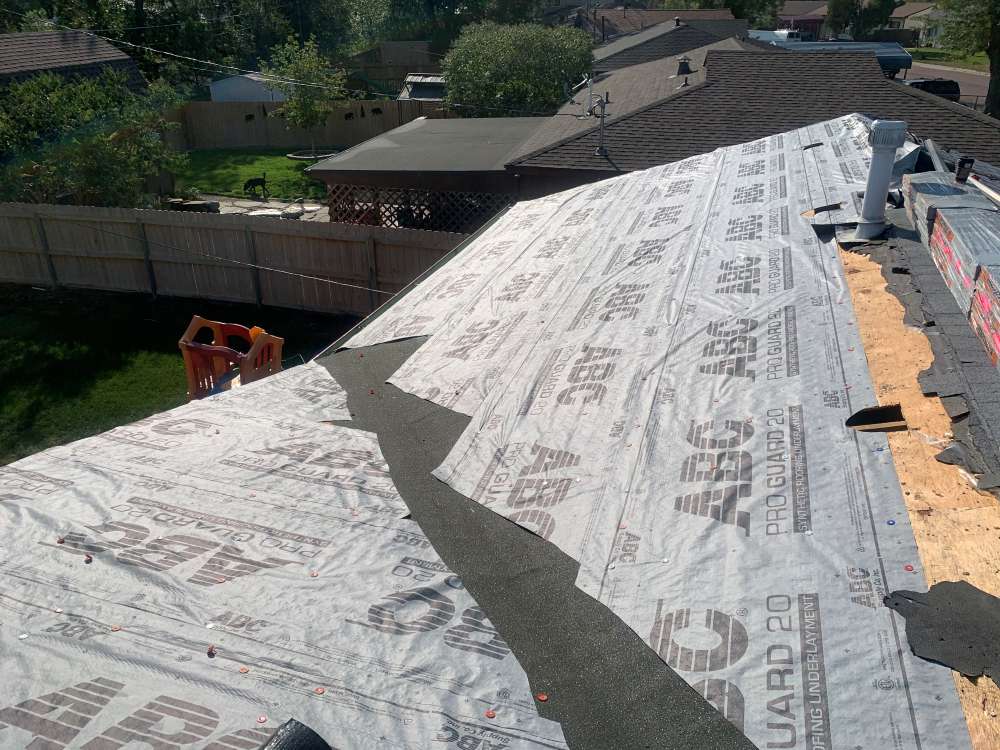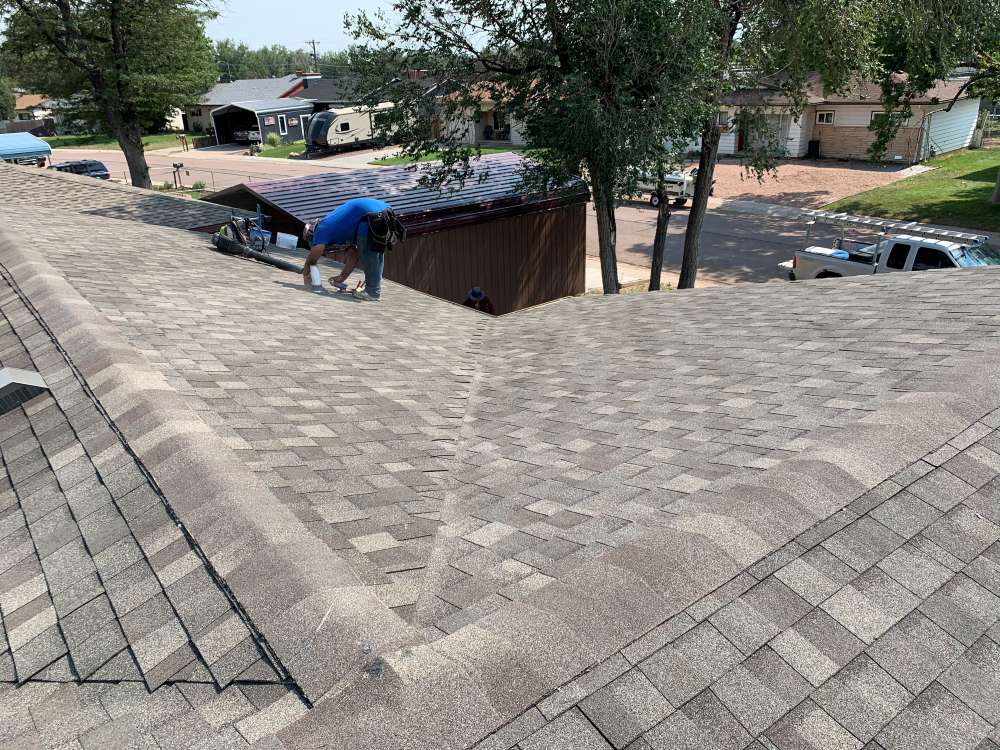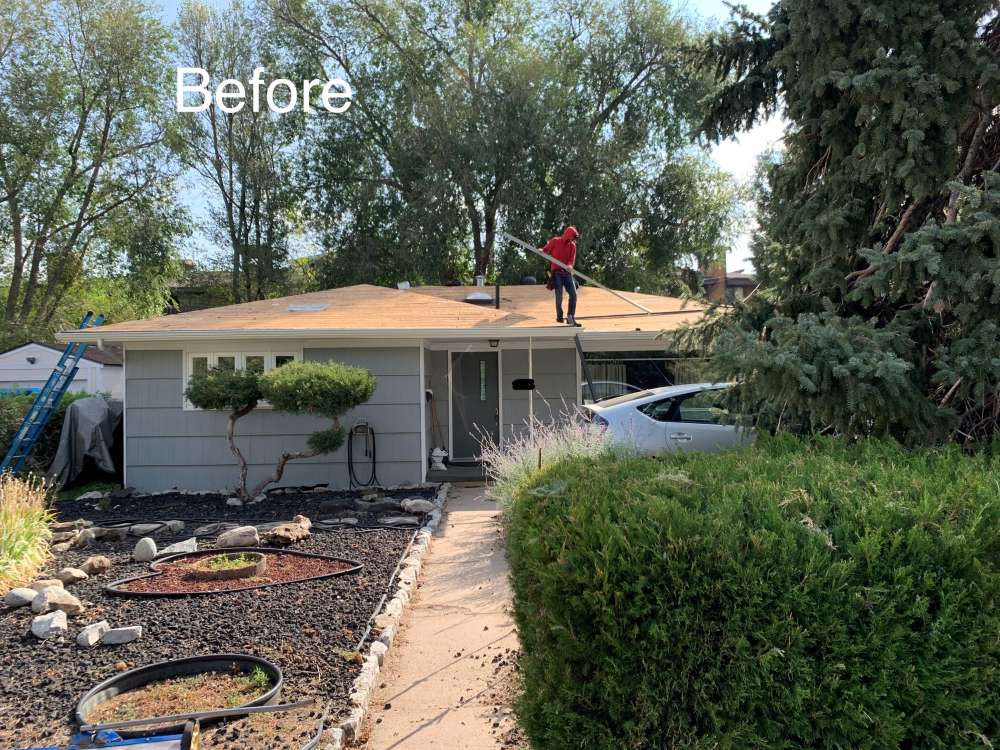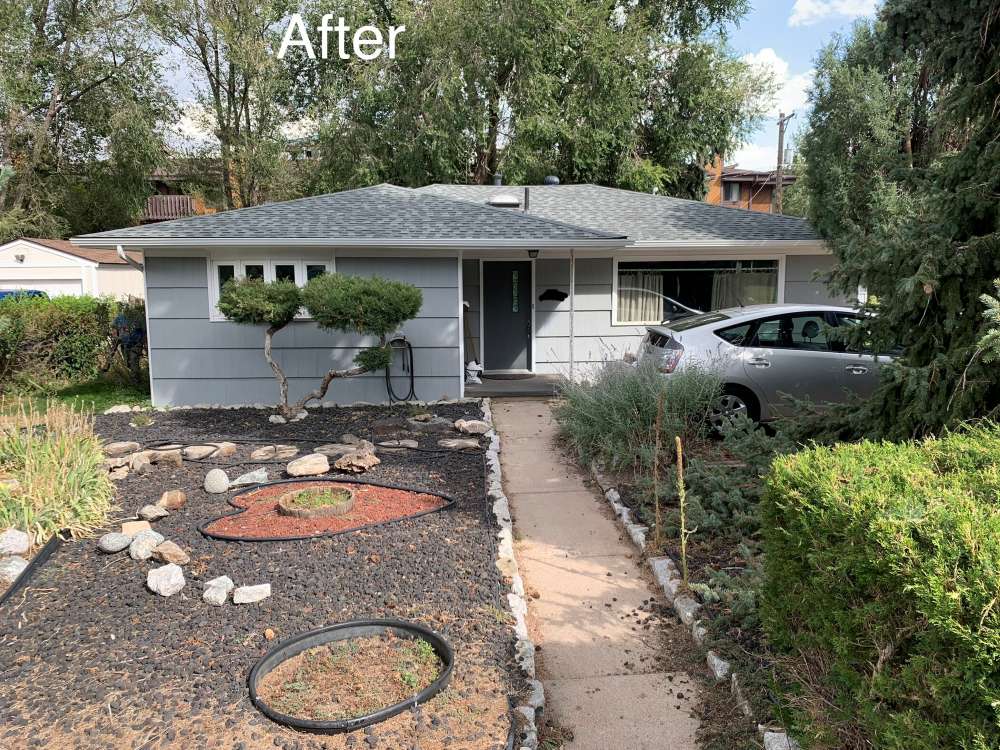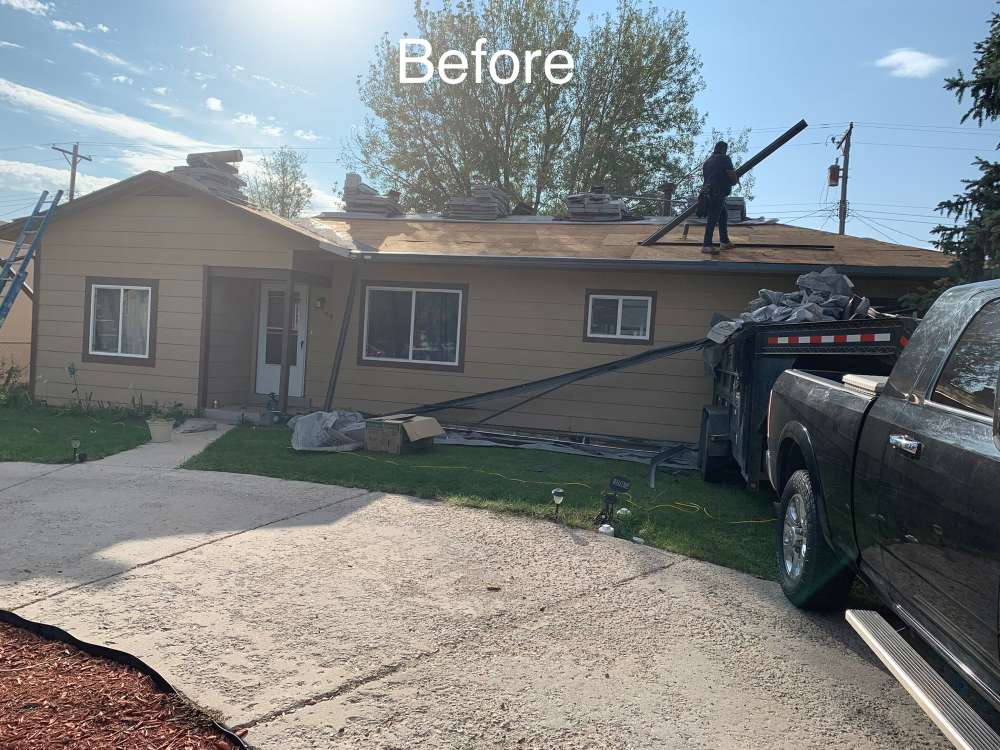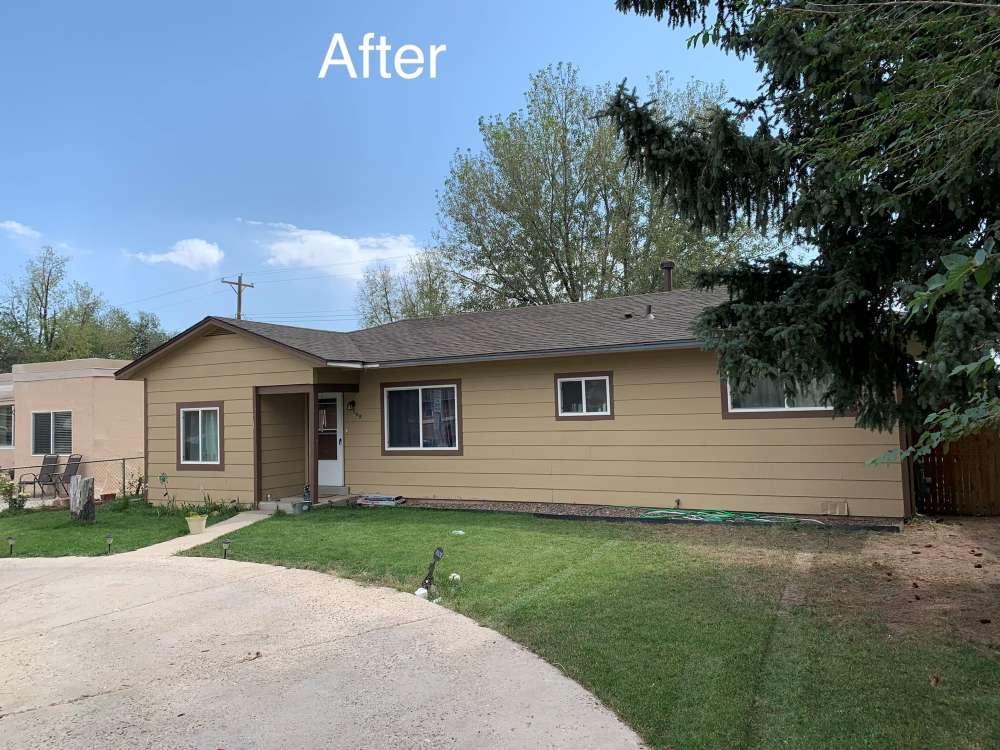Roofing Insurance Claims in Colorado Springs, CO
Grand Line Roofing: Helping Homeowners Navigate Roof Insurance Claims
Dealing with roof damage can be stressful, especially when navigating the insurance claims process. At Grand Line Roofing, we provide homeowners in Colorado Springs and throughout El Paso County, including Fountain and Security-Widefield, with clear guidance, thorough inspections, and reliable documentation to assist with their roofing insurance claims. Whether your roof has been impacted by hail, high winds, or severe storms, we help assess the damage, provide detailed reports, and offer professional repairs or replacements when needed.
Contact us today at 719-645-4200 or through our online form to start your insurance claim process. Se habla español!
How Grand Line Roofing Helps with Roofing Insurance Claims
Storm damage can leave homeowners uncertain about the next steps, but navigating the insurance claim process doesn’t have to be overwhelming. At Grand Line Roofing, we assist with every stage, from assessing damage to providing documentation and working with insurance adjusters, so you can move forward with repairs confidently.
Step 1: Roof Inspection & Damage Assessment
After a storm, even if your roof looks intact from the ground, hidden damage like lifted shingles, small punctures, or weakened areas can lead to bigger problems over time. We offer free first-time inspections to evaluate your roof’s condition, check for storm-related damage, and determine if filing an insurance claim is the right step.
Step 2: Documenting the Damage
Insurance claims require thorough documentation.
Our team provides:
- Clear photos of all visible damage
- A detailed inspection report outlining problem areas
- Notes on the roof’s condition before and after the storm
Having this information helps build a strong claim and helps prevent anything from being overlooked during the adjustment process.
Step 3: Filing the Insurance Claim
Once the damage is documented, the next step is to contact your insurance provider to start the claims process. Every policy is different, so we help homeowners understand what their coverage includes and what to expect when filing a claim.
Step 4: Meeting with the Insurance Adjuster
After you file your claim, your insurance company will send an adjuster to inspect your roof. We recommend having a roofing contractor present during this visit to help point out damage that may not be immediately obvious.
Our team provides:
- A detailed damage report to support your claim
- Assistance in communicating with the adjuster
- Guidance on what repairs or replacements may be needed
Step 5: Reviewing the Insurance Estimate
Once the adjuster finalizes their report, your insurance provider will issue an estimate for repairs or replacement. We help homeowners review this estimate to confirm it covers all necessary work. If anything is unclear or seems incomplete, we provide additional documentation to help clarify the claim.
Step 6: Scheduling Repairs or Replacement
After claim approval, we work with you to schedule timely repairs or a full roof replacement. We install durable, high-quality materials designed to withstand Colorado’s high-altitude, semi-arid climate, offering protection for your home over time.
Common Types of Storm Damage in Colorado Springs
Hail Damage: Dents, Cracks, & Granule Loss
Hailstorms are common in Colorado Springs, and even small hailstones can damage a roof over time.
Signs of hail damage include:
- Dents or cracks in shingles. Hail can leave impact marks or even break shingles, making them more vulnerable to leaks.
- Granule loss. Asphalt shingles have a protective layer of granules that help prevent sun and water damage. Hail impact can knock these off, exposing the underlying material to wear and tear.
- Dented metal components. Gutters, vents, and flashing may also show signs of hail impact, which can indicate damage to your roof.
At Grand Line Roofing, we offer free inspections to assess hail damage. If repairs are needed, we provide shingle replacements or full roof restoration using materials built to withstand Colorado’s extreme weather.
Wind Damage: Lifted or Missing Shingles
Strong winds don’t just move patio furniture, they can also lift, loosen, or tear off shingles, leaving your roof exposed to water infiltration.
Some signs of wind damage include:
- Curled or lifted shingles. If shingles appear bent or raised, the wind may have weakened their seal, increasing the risk of leaks.
- Missing shingles. Gaps in your roof can expose the underlayment or wood decking beneath.
- Damaged flashing. Wind can loosen or detach flashing around chimneys, skylights, or vents, leading to water penetration.
After a windstorm, our team inspects roofs for loose or missing shingles and compromised flashing. If the damage is extensive, we will discuss repair or replacement options that best fit your needs.
Water Damage: Leaks, Mold, & Rotting Wood
Even if hail or wind doesn’t cause immediate damage, storm-related water infiltration can lead to long-term problems.
Signs of water damage include:
- Water stains on ceilings or walls. This is often the first visible sign of a roof leak.
- Mold growth. Moisture trapped in your attic or roofing materials can create the perfect environment for mold.
- Rotting wood. If water seeps under your shingles, the underlying wood can weaken, leading to structural issues over time.
If we find signs of water damage, we locate the source of the leak and recommend the most effective repair solutions. Whether it’s replacing damaged shingles, fixing flashing, or installing better ventilation, we help protect your home from further moisture-related issues.
Reach out to us today at 719-645-4200 or through our online form to schedule a roof inspection and start the insurance claims process.
Common Questions About Roof Insurance Claims
Will My Insurance Cover a Roof Replacement?
Most homeowners’ insurance policies in Colorado Springs and throughout El Paso County cover storm-related roof damage, but the specifics can vary. We can inspect your roof’s condition and help determine whether it’s worth filing a claim.
How Long Does the Process Take?
The timeline for roof insurance claims in Colorado Springs depends on your insurance provider and the extent of the damage. Inspections, approvals, and repairs typically take anywhere from a few weeks to several months, depending on the situation.
What If My Claim Is Denied?
If your claim is denied, you may have the option to request a second inspection. We can assist by providing additional documentation and working with your insurance provider to review the decision.
Why Choose Us?
Being licensed and insured, Grand Line Roofing is more than just a roofing company, we’re a locally owned, family-operated business rooted in Colorado Springs. Led by a second-generation roofer with years of hands-on experience, we pride ourselves in delivering high-quality work and honest service. Whether it’s handling emergency repairs, navigating insurance claims, or providing full roof replacements, we’re here to help homeowners protect their homes.
24/7 Emergency Service
Storms don’t wait for business hours, and neither do we. Our team is available around the clock to handle urgent roof repairs and emergency tarping to help prevent further damage.
Veteran & Active Military Discounts
We appreciate those who serve. Veterans and active-duty military members receive 10% off roof replacements, with potential additional savings during the winter months.
Se Habla Español
We proudly serve Spanish-speaking homeowners, offering clear communication and reliable roofing solutions.
Comprehensive Roofing Services
From repairs and full replacements to skylight installations, we work with a variety of roofing materials, including shingles, tile, metal, and asphalt. We also take on commercial roofing projects, delivering durable solutions tailored to Colorado’s unique climate.
If your roof has been damaged by a storm or you need help with an insurance claim, we’re here to provide clear guidance and high-quality service.
Recent Work
Schedule an appointment with us today at 719-645-4200 or through our online form. We offer a free first-time inspection!
Why Choose Grand Line Roofing?

Your Roof Deserves the Best
This site is protected by reCAPTCHA and the Google Privacy Policy and Terms of Service apply.




